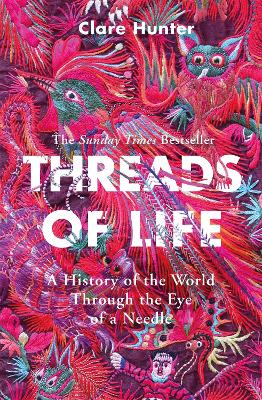Reviewed by annieb123 on
Threads of Life: A History of the World Through the Eye of a Needle is an erudite survey of the social history of needlework written by Clare Hunter. Released 15th Oct 2019 by Abrams, it's 320 pages and available in hardcover format.
These disparate essays cover shared emotional human themes from loss and frailty, captivity, value, artistic merit, and having a voice. There are 16 different thematic chapters along with a foreword and conclusion. The author has a very precise but soulful writing voice and connects emotionally with the reader. I was drawn in and touched and emotionally invested in the stories she conveys. Many of them had an immediacy and relevance despite the intervening years (sometimes centuries).
The writing feels academic, though there are no annotations directly in the text. The book does include a fairly extensive bibliography and links list with online resources for further reading. I am emphatically not a historian (big bionerd here), but when spot checking some of the facts listed, I found no glaring errors.
The writing and spelling are British standard, but it shouldn't be distracting or intrusive for most readers. The biggest drawback in my opinion was the lack of illustrations. The author has included an extensive links list for online searches of many of the pieces which are covered in the text. I think that might also be one of the reasons that it felt like a more academic treatise to me.
The history of needlework is tied in many places to gender history, and as such, this would make a good support text for art history, gender studies, textile studies and the like. It also made for an interesting (sometimes touchingly sad) and captivating read for non-academics as well. Just don't expect illustrations.
Four stars.
Disclosure: I received an ARC at no cost from the author/publisher for review purposes.
Reading updates
- Started reading
- Finished reading
- 26 October, 2019: Reviewed
